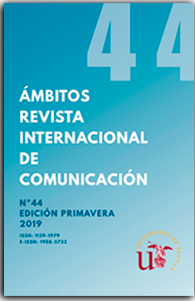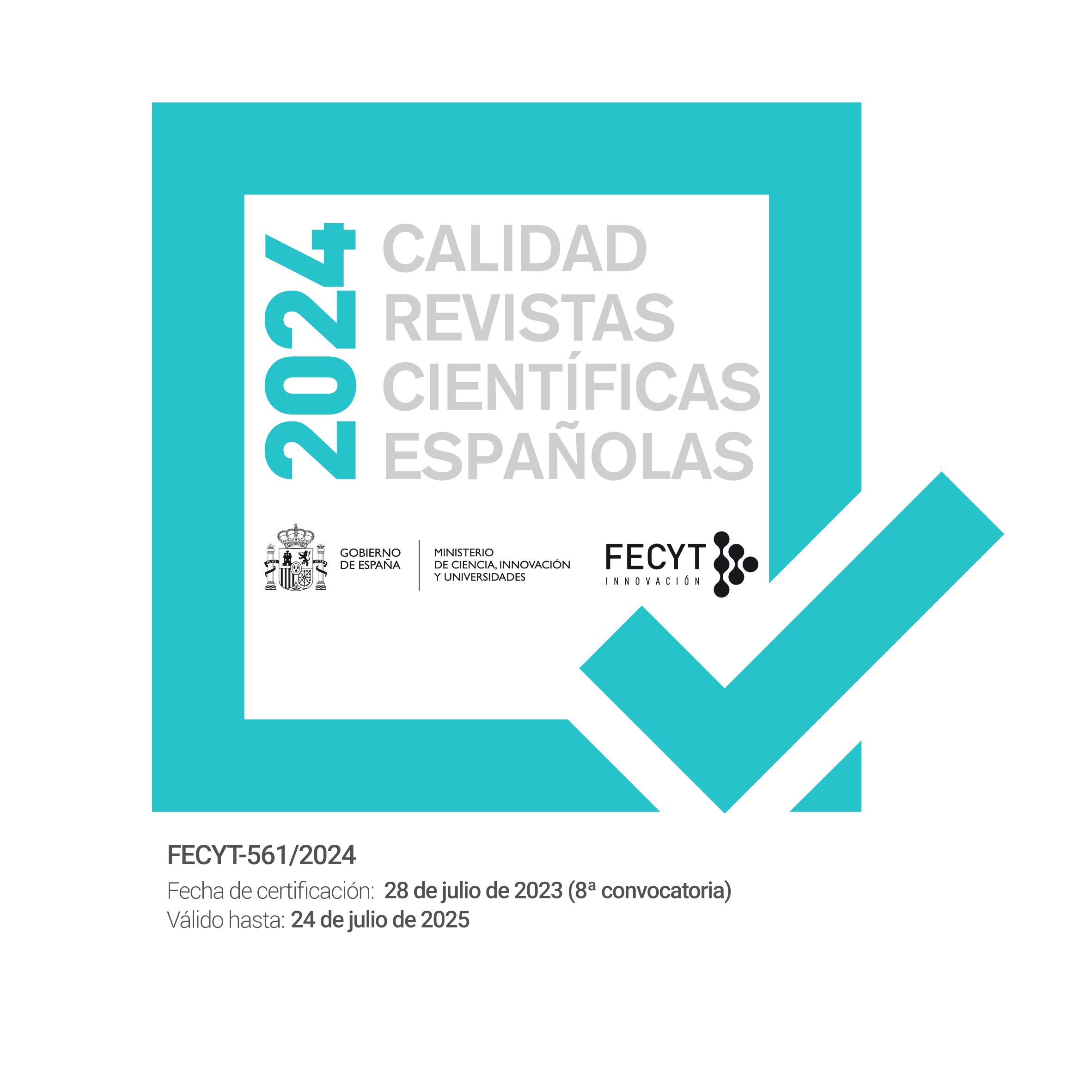Pobreza intergeracional no complexo de favelas do São João – Rio de Janeiro – Brasil
DOI:
https://doi.org/10.12795/Ambitos.2019.i44.02Keywords:
Poverty, Reproduction, Generations, Intergenerational cycle of povertyAbstract
This paper discusses a multidimensional approach to poverty, highlighting variables that allow us to gauge and interpret the reproduction of intergenerational poverty (Bird, 2007). This exploratory and descriptive research privileged a qualitative methodology based on semi - structured interviews conducted with 29 residents of the São João favelas complex, in Engenho Novo, Rio de Janeiro. We adopted a standard of comparative analysis between three generations: first generation are the progenitors (G1); the second, the generation under analysis (G2); and their descendants are (G3); the analysis was based on a systematic reasoning of comparison of 23 variables to create composite classification indices of the families. The study pointed out that the difficulties faced by residents of the favelas of Rio de Janeiro trigger mechanisms that produce and transmit poverty, and that family members, even though they had access to education and some public policy measures, remained largely in poverty, given the social dynamics experienced in the context of the favela. The factors promoting the intergenerational poverty cycle in these territories are present in the intra-and extra familial dimension, as referred to by Bird (2007). In this way, we conclude that the effectiveness of public policies aimed at the disruption of poverty require in-depth studies on the social dynamics specific to the context of the Rio de Janeiro favelas to subsidize the formulation of measures consubstantiated in the particularities of the place.
Downloads
References
Referências
Barros, Ricardo Paes; Carvalho, Mirela; Franco, Samuel (2006). Pobreza multidimensional no Brasil. Rio de Janeiro: IPEA. (Textos para discussão nº 1.227).
Bird, K. (2007). The intergenerational transmission of poverty: an overview. Chronic Poverty Research Centre Working Paper nº 99. Doi: http://dx.doi.org/10.2139/ssrn.1629262.
Bird, K. (2010). Using life history research as part of a mixed methods strategy to explore resilience in conflict and post‐conflict settings. CPRC Conference Paper. September. Ten years of 'war against poverty' what have we learned since 2000 and what should we do 2010‐2020.
Bourdieu, Pierre. A escola conservadora. In: ______; Nogueira, M. A.; Catani, A. (Orgs.) (1998). Escritos de educação (p. 39-64). Petrópolis: Vozes.
Cain, E. (2009).Social protection and vulnerability, risk and exclusion across the life-cycle. In: OECD. Promoting pro.poor growth: employment and social protection. Paris: OECD. Disponível em: www.oecd.org/dataoecd/63/10/43514563.pdf.
Crespo, Antônio Pedro Albernaz; Gurovitz, Elaine (2002). Administração pública – a pobreza como fenômeno multidimensional. RAE-eletrônica, 1, n. 2, 11, jul./dez. Doi: http://dx.doi.org/10.1590/S1676-56482002000200003.
Doeringer, P.; Piore, M. (1971). Internal labor market and manpower analysis. Lexington: Heath Lexington Books.
Draibe, Sônia (2003). A política social no período FHC e o sistema de proteção social. Tempo Social, São Paulo, v. 15 n. 2, nov. Disponível em: http://dx.doi.org/10.1590/S0103-20702003000200004. Acesso em: 10 jan. 2018.
Esteves, António J. (1986). A investigação-acção. In: Pinto, J. M; Silva. A. S. Metodologia das Ciências Sociais. (pp. 251-278). Porto: Afrontamento.
Feres, Juan Carlos; Villatoro, Pablo (2013). Cadernos de estudos Desenvolvimento Social em Debate, n. 15. Brasília: Ministério do Desenvolvimento Social e Combate à Fome; Secretaria de Avaliação e Gestão da Informação.
Guerra, Isabel Carvalho (2006). Pesquisa qualitativa e análise de conteúdo – sentidos e forma de uso. Estoril: Principia.
Hagenaars, Aldi; De Vos, Klaas (1988). The definition and measurement of poverty. The Journal of Human Resources, 23, n. 2, 211-221, spring.
Hulme, D.; Shepherd, A. (2003). Conceptualizing Chronic Poverty. World Development, 31(3), 403-423.
______; ______ (2005). Identifying and understanding chronic poverty: beyond monetary measures. Manchester: University of Manchester and Chronic Poverty Research Centre.
Johnson, A. G. (1997). Dicionário de Sociologia. Guia prático de linguagem sociológica. Rio de Janeiro: Jorge Zahar.
McKay, A.; Lawson, D. (2002). Chronic poverty: a review of current quantitative evidence. Chronic Poverty Research Centre (CPRC). Working Paper 15.
Minayo, M. C. S. (2007). Análise qualitativa: teoria, passos e fidedignidade. Ciências & Saúde Coletiva, 17(3), 621-626.
Motta, A. M. A produção do conhecimento socialmente robusto no contexto da educação e do trabalho: inserção de moradores em comunidades do Rio de Janeiro no mercado de trabalho formal. 2012. 165 f. Dissertação (Mestrado em Políticas Públicas e Formação Humana) – Faculdade de Educação, Universidade do Estado do Rio de Janeiro.
Motta, A. M.; Parente, C. Reprodução intergeracional da pobreza: o caso do complexo de favelas do São João - Rio de Janeiro – Brasil. 7º Congresso Ibero-Americano em Investigação Qualitativa (CIAIQ2018). Fortaleza/CE, 2018.
Raczynski, Dagmar (2002). Equidad, inversión social y pobreza. Innovaren como se concibe, diseña y gestionala politicas y los programas sociales. Mimeo. Documento preparado para o Seminario Perspectivas Innovativas en Política Social. Desigualdades y Reducción de Brechas de Equidad, Mideplan – Cepal, 23-24 mayo.
Ritto, A. (2010). Metodologia para produção de conhecimento socialmente robusto. Rio de Janeiro: Ciência Moderna.
Serapioni, Mauro (2016). Conceitos e métodos para a avaliação de programas sociais e políticas públicas. Sociologia, Revista da Faculdade de Letras da Universidade do Porto, XXXI, 59-80.
Santos, Wanderley Guilherme dos (1994). Cidadania e Justiça: a política social na ordem brasileira. 3ª ed. Rio de Janeiro: Campus.
Sen, Amartya (2000). Desenvolvimento como liberdade. São Paulo: Companhia das Letras.
Yazbek, Maria Carmelita (2012). Pobreza no Brasil contemporâneo e formas de seu enfrentamento. Serv. Soc., 110, p. 288-322, abr./jun. Disponível em: http://www.cressrn.org.br/files/arquivos/j01k8G2OYc356230ru47.pdf.
Downloads
Published
How to Cite
Issue
Section
License
Ámbitos. Revista Internacional de Comunicación is an open access journal, which means that all content is freely available at no charge to the user or their institution. Users may read, download, copy, distribute, distribute, print, search or link to the full text of articles, or use them for any other lawful purpose, without seeking prior permission from the publisher or author. This definition of open access is in accordance with the Budapest Open Access Initiative (BOAI).

Unless otherwise noted, all content in the electronic edition is distributed under a "Creative Commons Attribution-NonCommercial-ShareAlike 4.0 International License". You can consult the informative version and legal text of the licence here. This should be expressly stated in this way where necessary.
In case of acceptance of the manuscript, the authors cede the rights of the work for its publication to Ámbitos. Revista Internacional de Comunicación under the Attribution-NonCommercial-ShareAlike 4.0 International license contract (CC BY-NC-SA 4.0). The authors retain copyright and third parties are authorised to copy, distribute and make use of the work, provided they comply with the terms and conditions set out in the licence
- Cite the authorship and the original source of publication (journal, publisher and URL of the work).
- Do not use them for commercial purposes.
- If you remix, transform or create from the material, you must release your contributions under the same license as the original.
More information can be found at https://creativecommons.org/licenses/by-nc-sa/4.0/deed.es


















